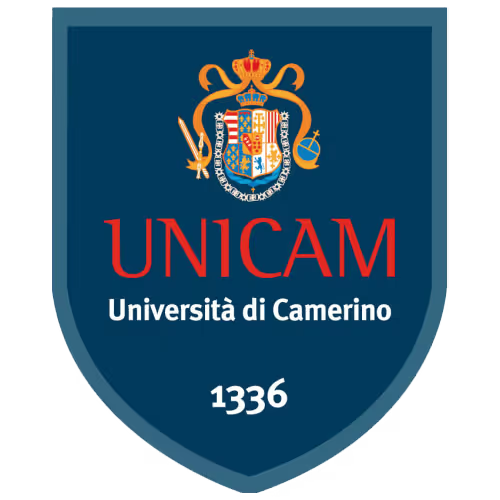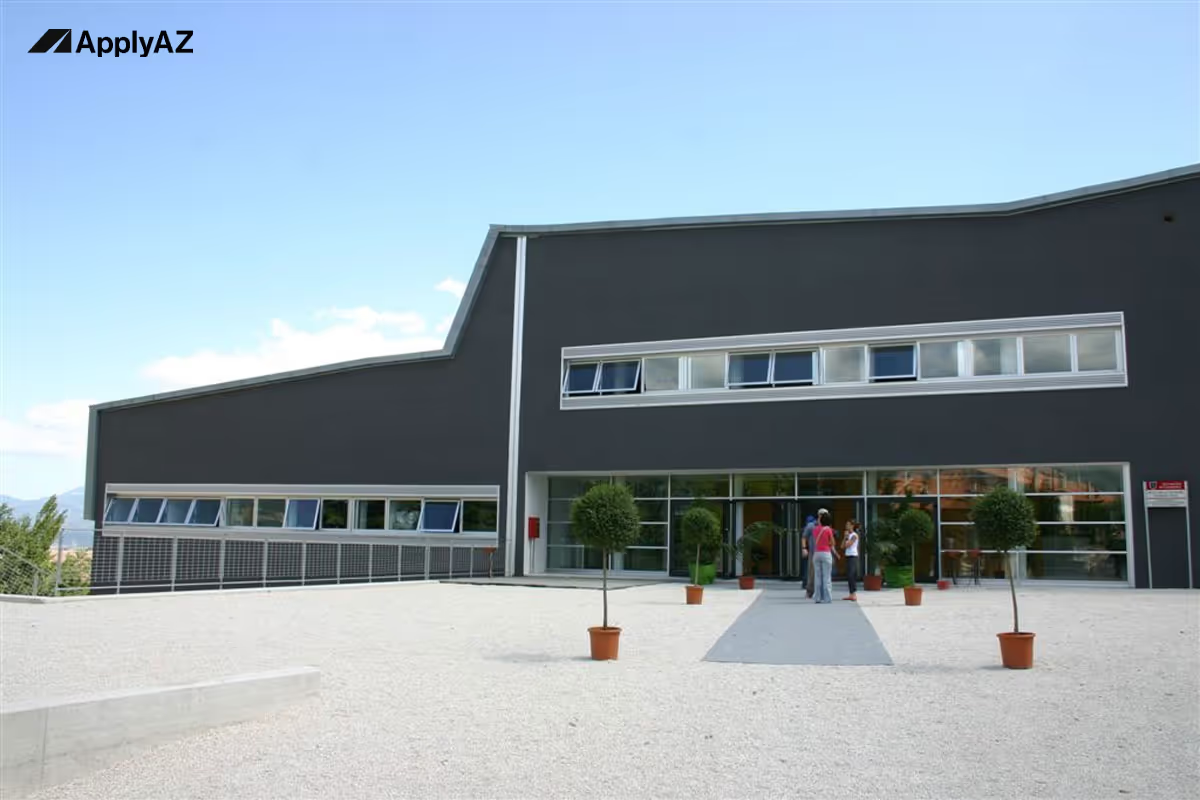Heading
Heading








University of Camerino
A historic campus with modern research ambitions
Founded in 1336, the University of Camerino is one of Europe’s oldest public institutions. Despite its age, the university keeps pace with global innovation through five specialised schools: Architecture and Design, Biosciences and Veterinary Medicine, Law, Pharmacy, and Science and Technology. International rankings often highlight its research impact in chemistry and computer science, while the teaching environment earns high student‑satisfaction scores. Several master’s degrees now run fully in English, adding to the growing list of English‑taught programs in Italy and giving you the chance to study in Italy in English while paying regulated state fees.
Academic highlights
- Chemistry and Advanced Materials laboratories recognised by European research councils.
- Computer Science department leading Horizon projects on cybersecurity and artificial intelligence.
- Veterinary Medicine hospital offering hands‑on clinical rotations with small and large animals.
- Architecture school nestled in a UNESCO‑listed region, perfect for heritage‑restoration studies.
Living and learning in Camerino
Camerino is a small medieval town in the Marche region. Its compact size means lecture halls, dorms, cafés, and sports facilities all sit within a fifteen‑minute walk. With roughly 6,000 residents and 8,000 students, the local economy welcomes student life. Rents for shared flats average €200–€250 per month, and university cafeterias serve balanced meals for under €4. The Apennine setting keeps summers warm (about 28 °C) and winters cool but sunny (around 4 °C), ideal for hiking or skiing between study blocks. Buses link the town centre to railway hubs, and a discounted student pass covers regional travel.
Cultural events—classical concerts in Renaissance halls, food festivals celebrating truffles and olives, and weekend language exchanges—make it easy to integrate. Because classes are in English, international students quickly build mixed friendship groups, then pick up conversational Italian during everyday errands.
Job prospects and internships
While Camerino itself is small, its network of partnerships spans the Marche manufacturing belt and national research centres. Key sectors include:
- Pharmaceuticals and biotech – regional plants host internships for pharmacy and chemistry students.
- Agri‑food technology – nearby companies refine food‑quality analytics and sustainable packaging.
- Advanced manufacturing – robotics and composite‑material firms collaborate with engineering labs on Industry 4.0 projects.
- Digital services – local start‑ups use cloud and AI solutions, offering roles for computer‑science graduates.
Internship agreements allow you to earn thesis credits and apply classroom theory to real problems. Many positions accept English as the working language and pay modest stipends, easing living costs. After graduation, alumni find roles across Italy and wider Europe, helped by the university’s career office and Erasmus+ research networks.
Funding and scholarships
Being part of public Italian universities, Camerino keeps tuition predictable—generally €900–€2,000 a year depending on household income. International applicants can compete for the DSU grant, which may waive fees entirely, provide rent support, and add a yearly stipend of up to €7,000. Merit scholarships for high GPA or language scores further reduce expenses, making the overall package competitive with tuition‑free universities Italy references.
Why choose Camerino
- Intimate learning: small cohorts mean professors know your name and guide your research closely.
- Cost advantage: affordable housing, DSU grant opportunities, and low campus fees.
- Research access: modern labs open to master’s students from the first semester.
- Lifestyle balance: safe town, clean air, mountain sports, and rich cultural heritage.
Finish your classes on Friday, hike the Sibillini peaks on Saturday, and present your polymer‑science poster at a European conference on Monday—that’s the Camerino rhythm.
In two minutes we’ll confirm whether you meet the basic entry rules for tuition-free, English-taught degrees in Italy. We’ll then quickly see if we still have space for you this month. If so, you’ll get a personalised offer. Accept it, and our experts hand-craft a shortlist of majors that fit your grades, goals, and career plans. Upload your documents once; we submit every university and scholarship application, line up multiple admission letters, and guide you through the visa process—backed by our admission-and-scholarship guarantee.
Physics (LM‑17) at University of Camerino
A public university with medieval roots and modern physics labs
Founded in 1336, University of Camerino ranks among the oldest public Italian universities yet hosts cutting‑edge cryostats, laser systems, and a high‑performance computing cluster. Its Physics LM‑17 course is one of the standout English‑taught programs in Italy. You will tackle quantum mechanics and cosmology in small, mentor‑focused classes while enjoying low tuition and the chance to compete for the DSU grant. These factors push expenses close to figures associated with some tuition-free universities Italy often highlights.
Programme blueprint: 120 ECTS over two dynamic years
Year 1 – the theoretical engine
- Advanced Quantum Mechanics – operator formalism, spin‑statistics, scattering theory; weekly problem sets probe particle tunnelling.
- Statistical and Thermal Physics – ensembles, phase transitions, and renormalisation; simulations model Ising lattices in Python.
- Electrodynamics and Relativity – Maxwell to Minkowski; lab sessions measure cavity resonances.
- Mathematical Methods for Physics – complex analysis, group theory, differential geometry.
- Scientific Coding in C++ and Python – vectors, ODE solvers, and parallel basics on the university cluster.
- Elective A (6 ECTS) – choose Solid‑State Foundations, Particle Detectors, or Observational Astronomy.
Year 2 – specialisation and research trajectory
- Track Core – pick one path:
- Condensed‑Matter & Nanoscience: many‑body theory, thin films, STM techniques.
- High‑Energy & Astroparticle Physics: Standard Model, cosmic‑ray detectors, CERN data analysis.
- Astrophysics & Cosmology: stellar structure, dark energy, gravitational waves.
- Applied Physics: medical imaging, radiation physics, renewable‑energy materials.
- Advanced Laboratory – two eight‑week rotations in laser optics, nanofabrication, or Monte‑Carlo detector testing.
- Research Internship (18 ECTS) – 450 hours at INFN, ESRF, or industry R&D; outcomes feed thesis experiments.
- Elective B (6 ECTS) – options include Quantum Computing, Plasma Physics, or Biophotonics.
- Master’s Thesis (30 ECTS) – original project targeting journal publication or patent filing.
All teaching occurs in English, ensuring you truly study in Italy in English without translation stress.
Learning style: flipped classes, agile sprints, and peer review
Professors record micro‑lectures you watch before class. Contact time focuses on:
- Deriving equations on digital whiteboards.
- Debugging simulation code in groups of four.
- Presenting 5‑minute lightning talks to hone concise English delivery.
- Weekly stand‑ups mirroring Agile workflows—set goals Monday, demo results Friday.
Each paragraph in lab manuals stays under 80 words, perfect for CEFR B2 readers.
Hardware that sharpens your skills
- Cryogenic Systems – dilution refrigerators for superconducting qubit studies.
- Ultrafast Laser Suite – femtosecond pulses for pump–probe spectroscopy.
- Scanning Probe Microscopes – atomic‑resolution imaging of 2D materials.
- Particle‑Detector Test Hall – scintillators, SiPMs, and FPGA read‑outs linked to INFN networks.
- High‑Performance Computing Cluster – 10 000 CPU cores and 300 GPUs managed by Slurm, preloaded with GEANT4, VASP, and TensorFlow.
Access begins in semester 1 after safety induction.
Research culture: small town, global impact
Despite Camerino’s size, its physics groups co‑author papers with CERN, KEK, and LIGO. Students often:
- Publish at IEEE Nuclear Science Symposia.
- Present dark‑matter simulations at the European Physical Society meeting.
- Test graphene‑based sensors under European Space Agency grants.
Such exposure elevates CVs before graduation.
Internship routes: turning equations into enterprise
The 18‑credit placement bridges campus and workplace. Recent hosts:
- INFN Gran Sasso – calibrating neutrino detectors 1.4 km underground.
- Synchrotron ESRF Grenoble – exploring magnetic domains via X‑ray scattering.
- Medical‑physics units – dosimetry audits for proton‑therapy centres.
- Quantum‑tech start‑ups – benchmarking cryogenic control boards.
Contracts specify learning goals, weekly mentor check‑ins, and tangible deliverables—often prototype reports or conference posters.
Funding your Italian adventure
DSU grant essentials
- Tuition waiver, rent subsidy, meal vouchers, and up to €7 000 stipend yearly.
- Open to EU and non‑EU citizens within income thresholds.
- Maintain 30 ECTS per year to renew.
Extra scholarships for international students in Italy
- Merit fee cuts for GPAs above 3.7/4.0 or GRE Quant ≥ 160.
- Teaching assistantships in lab rotations, paid hourly.
- Erasmus+ mobility grants for a semester in Sweden or Germany.
- Research fellowships tied to EU Horizon projects.
Layer DSU, merit, and Erasmus funds, and your net cost can match figures at selected tuition-free universities Italy references, yet you retain modern lab access.
Graduate outcomes: numbers that matter
A survey shows 92 % employment or PhD entry within six months. Roles include:
- PhD candidate in quantum materials at ETH Zürich.
- Data scientist modelling risk for aerospace insurers.
- Medical‑physics resident in Milan hospitals.
- Detector‑hardware engineer at CERN’s ATLAS upgrade.
- AI algorithm developer translating physics models into software for climate forecasting.
Employers mention graduates’ dual strength: rigorous computation and clear English presentation—thanks to studying in Italy in English every day.
Admissions: clear steps
- Bachelor’s in physics, engineering, or applied maths (180 ECTS).
- Core prerequisites: quantum mechanics, electromagnetism, calculus.
- English proof: IELTS 6.5, TOEFL 90, or certified English‑medium degree.
- Online interview: 20 minutes on problem solving and research interests.
Support beyond the lab
- Language centre with free Italian crash courses.
- Counselling desk offering confidential help in several languages.
- Career office hosting hackathons and employer fairs.
- Peer‑mentor scheme pairing first‑years with second‑years for lab tips and DSU paperwork guidance.
Why this LM‑17 deserves your application
- Full English instruction inside an affordable public Italian university.
- Early access to cryogenics, lasers, and HPC facilities.
- Research ties spanning CERN to the European Space Agency.
- DSU grant and merit aid slashing living costs.
- Small cohorts fostering one‑on‑one mentorship.
- Proven graduate success in academia, tech, and finance.
With these assets, Camerino’s Physics master’s ranks among the most versatile English‑taught programs in Italy.
Ready for this programme?
If you qualify and we still have a spot this month, we’ll reserve your place with ApplyAZ. Our team will tailor a set of best-fit majors—including this course—and handle every form and deadline for you. One upload, many applications, guaranteed offers, DSU grant support, and visa coaching: that’s the ApplyAZ promise. Start now and secure your spot before this month’s intake fills up.

They Began right where you are










